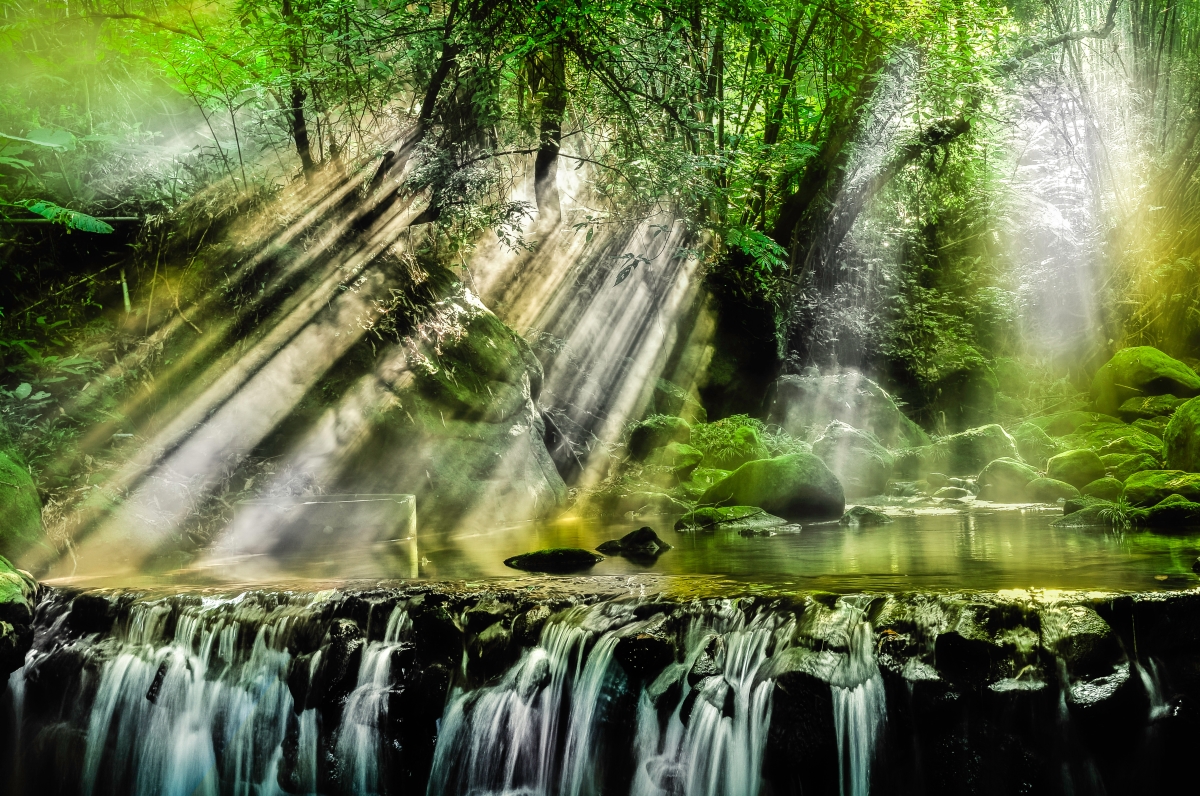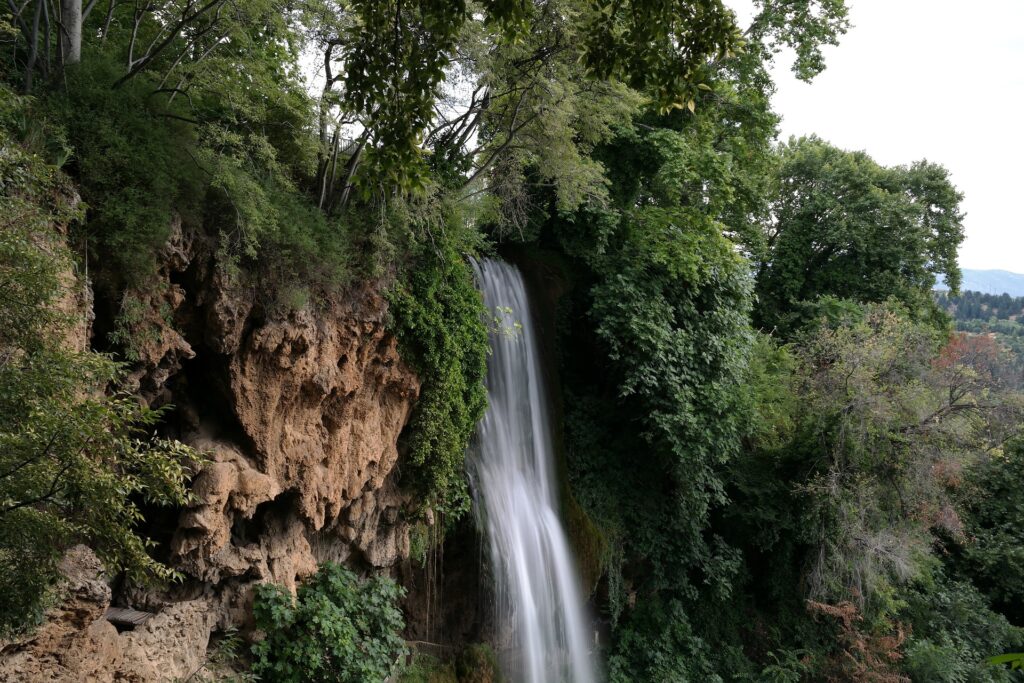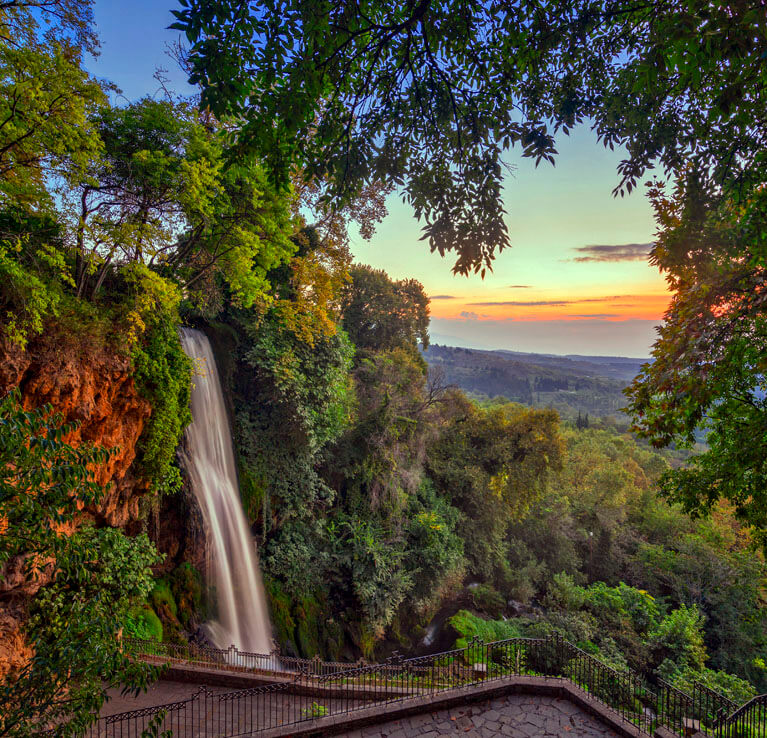The waterfalls of Edessa create a paradise on earth, attracting visitors who are seduced by the archetypal symbol of human existence: water.
A source of inspiration, constantly changing, sometimes calm and others turbulent, the liquid element either in the form of the sea or the river plays a dominant role and is identified with one of the strongest dipoles of human existence. Of life and death.

As a source of life and efflorescence, it is perfectly harmonised with the natural environment, generously granting its gifts to the formation of landscapes.
A natural phenomenon shaped after a forceful earthquake in the 14th century gave its place to the waterfalls of Edessa, a trademark of the region.
The city, with a strong liquid element in its centuries-old history seeing as Edessa signifies tower in the water (veda in Phrygian stood for water or tower in water) and Vodena (voda in Slavic stands for water) forms a unique setting where dense vegetation dominates and natural environment resounding melodious water calls.
Inextricably linked to the history of the city, the captivating waterfalls are located in the homonymous park crossed by the Edessian river, offering an impressive sight to young and old alike with the powerful fall of water reaching a depth of 33 meters!

The waterfalls of Edessa are numbered 12 although only 4 are clearly visible while rest of them are lost in the depths of the thick vegetation of the region.
Throughout the city, the Edessian River (Vodas) along with its 7 tributaries makes its presence felt. Of particular beauty are the routes parallel to the banks of the river that were once used by the Edessians to move the impellers of the mills. The picturesque setting is completed by the presence of 71 small and large bridges and dozens of flower beds.

The Edessian River originates in Vora, north of Lake Vegoritida and then flows east creating a small gorge known as the Straits of Edessa. Further east, it feeds Agra hydroelectric plant and then ends up in the city of Edessa, which crosses. At its exit from the city forms the well-known waterfalls. The largest of them, Karanos, is 70 meters high and is the greatest in Greece.
Edessaios river commences its course in the city of Edessa next to the green area of Pasha-Tsair and is suitable for a short rafting tour to the city center.
Consequently, passes under the Byzantine bridge where it is assumed that the Egnatia road passed through. Αfterwards, it branches into the city shaping the small waterfalls.
When water reaches the edge of the rock it creates the 7 Waterfalls that the city possesses nowadays. The most renowned are the ones located in the Waterfalls park, site of the ancient acropolis of Aiges, the famous Edessa waterfalls. Adjacent to the park is at present the city’s Open Air Museum of Water, where the water-powered workshops and factories once gave it the nickname “Manchester of the East”.

In Edessa, next to the Waterfalls and inside the city’s Water Museum, the first aquarium with endemic freshwater fish in Greece has been operating since May 2001.
At the Aquarium, you will find sections of endemic fish, reptiles, amphibious reptiles and crustaceans. Visitors can admire turtles, crabs, crayfish and various types of snakes.
